Meet Your 2025 MUFC Chair!
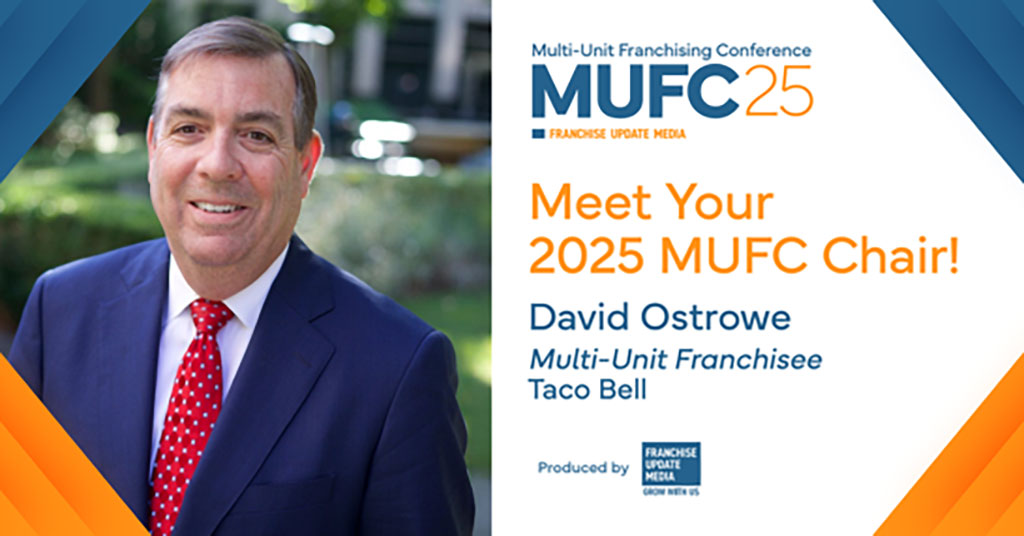
Since starting this newsletter in January 2024, we’ve received some truly insightful responses to our questions from multi-unit restaurant franchisees across the country—from those with just a handful of locations, all the way up to the country’s largest restaurant franchisee with more than 2,600 units.
One of our favorite (and most prolific!) contributors is David Ostrowe, Chair of the 2025 Multi-Unit Franchising Conference, which kicks off tomorrow in Las Vegas. See his MUFC welcome video here.
Currently a Taco Bell multi-unit operator, he’s also been involved with Captain D’s, Burger King, Taco Bueno, and Blaze Pizza among others during his 34 years in franchising (24 on the franchisee side, 10 on the franchisor side).
This former Navy pilot also operates a staffing/recruitment agency he founded in 1999; founded and successfully sold a restaurant management consulting company; served as Oklahoma’s Secretary of Digital Transformation and Administration; and was Chairman of the Board of Trustees for Oklahoma’s Lottery Commission. Learn more about his journey here.
We’ve compiled the best of his responses to the questions we’ve asked over the past year. Taken together, these responses provide a template for success for up-and-coming multi-unit restaurant franchisees.
Finally, a big shout-out for the countless hours he’s put in over the past year as Incoming Chair and MUFC Advisory Board member, working with fellow Advisory Board members to make this year’s MUFC the best ever!
Franchisee Bytes: In what ways are you using technology (like AI) to manage your business?
Want to hear directly from more multi-unit restaurant franchisees every Monday? Subscribe here.
Can you walk us through your journey from owning your first franchise to now managing multiple units?
I’m David Ostrowe, founder and CEO of O&M Restaurant Group, a testament to the power of strategic growth and operational expertise in the franchising realm.
My journey started on the franchisor side. When I told my boss that I wanted to be a franchisee, he said, “Why? It’s so much cleaner on our side.” I had to remind him that all the millionaires I knew were on the franchisee side. He rebutted by saying, “Only if they make it to the other side!”
I started with a small staffing franchise. It was a company I used when I was VP of operations for a large QSR brand. I transitioned to distressed restaurant operations and found my niche. I capitalized on opportunities where operational refinement and strategic capital injection could turn struggling units around. This wasn’t just about running restaurants; it was about rejuvenating and rebranding them into profitable ventures.
A significant aspect of my journey involved negotiating with banks and financial institutions, convincing them of the viability and potential of my business model. My mantra was, “I’m not just a restaurant, I’m a brand,” emphasizing the importance of brand identity and management in the franchising industry.
The process involved substantial investments in construction, landscaping, and lighting— reinvesting every earned penny back into the business. This reinvestment strategy wasn’t just about aesthetic enhancement, but about creating a welcoming and brand-consistent environment for our customers.
Critical to this success was rigorous daily management of all business indicators. From customer service metrics to financial performance, every aspect was meticulously monitored and optimized. This disciplined approach was instrumental in ensuring the sustained growth and success of the franchises.
Tax planning played a pivotal role, enabling the seamless transition and expansion from one venture to another. It was a strategic exercise in financial management, ensuring the most efficient use of resources for expansion and growth.
Today, my journey, which started in a modest 150-square-foot executive suite, has led to an expansive enterprise encompassing more than 100 restaurants across 4 states and employing more than 1,000 individuals. It’s a journey marked by strategic growth, operational excellence, and a relentless pursuit of success in the dynamic world of franchising.
Can you share some financial strategies or practices that have been instrumental in the profitability of your units?
In the dynamic landscape of franchising, our edge at O&M Restaurant Group is driven by a laser focus on financial and KPI oversight—which, contrary to what one might assume, doesn’t monopolize our time thanks to state-of-the-art software and custom dashboards.
Each day starts with a swift, yet thorough, 5–10 minute dive into the critical metrics of our operations. This quick scan covers everything from customer insights and digital engagement to inventory, labor costs, and sales trends. This isn’t just a task on my to-do list; it’s an integral part of my daily planning, setting the tone for the day and allowing for strategic adjustments on the fly.
This rigorous analysis isn’t just my personal routine; it’s a practice embedded in the very fabric of our company culture, one that I advocate every member of our team, especially unit managers, to adopt.
The rationale is simple, yet profound: real-time insights enable proactive decision-making. By staying attuned to daily KPIs, we empower our unit managers to not just react, but to anticipate and strategize. This not only drives profitability, it positions us to scale aggressively. We’re not just keeping pace; we’re setting the pace. This approach has been instrumental not only in our profitability, but as the bedrock upon which we plan to expand our footprint and continue our legacy of excellence in the franchising arena.
It’s extremely hard to take action if you don’t have your data in real-time. If you’re waiting for the data to take action, it’s probably too late.
What piece of advice would you give to someone considering purchasing their first franchise?
When considering purchasing your first franchise, it’s crucial to approach the decision with thorough research and caution. Here’s my advice.
Read the Franchise Disclosure Document (FDD): Understand what you’re committing to. This document is essential in outlining the obligations and expectations from both the franchisor and franchisee.
Run multiple budget pro formas: Assess the financial viability. Can you make money? Ensure you can capitalize the concept and have a clear path for growth, especially if things are not going according to plan.
Evaluate profit distribution: If the landlord, insurance company, and franchisor all make more money than you, reconsider your decision. Your profitability should be a priority.
Engage with other franchisees: Learn from their experiences. Ask them what they didn’t know or understand before they started. This insight can be invaluable.
Assess the franchise concept: Not all great ideas make great franchises. Some concepts might be better executed independently. Competition thrives on innovation, so consider whether you could do it better on your own.
Look for proven systems: A strong franchise should offer well-established systems and processes, a robust supply chain, real estate and construction expertise, and effective national marketing strategies. If you’re driving the entire brand recognition, why do you need them?
Consider long-term commitment: If you’re signing a 10- or 20-year deal, think about what the brand will look like at expiration and what your renewal rights are.
Remember, if a franchisor makes a mistake, they may get fired. If a franchisee makes a mistake, they could lose their house. Always weigh the risks and benefits carefully before making your decision.
Are there other multi-unit franchisees, inside or outside of the restaurant industry, whom you look up to or learn from?
For me, learning from others is a lifelong mission. I’ve gained invaluable insights from both good and bad bosses, as well as from peers who are outpacing me. My competitive nature drives me to strive for excellence constantly.
In franchising, I’ve learned significant lessons from various experiences. One memorable experience was dealing with a franchisor who was more focused on extracting fees than growing the brand. Their short-sighted approach ultimately led to their failure and negatively impacted many franchisees.
On the positive side, I’ve had the privilege of working with incredible industry leaders. My first major deal was with Darin Harris, then with Captain D’s. He’s now CEO of Jack in the Box. It was a straightforward, win-win deal. [Update: On Feb.24, 2025, Harris resigned as CEO after 5 years in the role.]
Another notable experience was with Jose Padilla, Steve Wiborg, and Glen Helton at Burger King. In less than 30 minutes, we negotiated a deal to save a Burger King market. These champions exemplify the power of collaboration and mutual growth.
Surrounding yourself with people who foster win-win relationships is crucial. Their support and vision make business not just manageable, but also rewarding.
How do you ensure your franchises remain engaged and beneficial to the local communities they serve?
Ensuring our franchises remain engaged and beneficial to the local communities they serve is a multi-faceted effort. Having a great franchisor that is committed with resources certainly helps. Taco Bell’s Live Más Foundation is a perfect example, providing us with the tools and framework to directly engage with our communities.
Through the support of other franchisees in the area, we’ve collectively driven more than $250,000 in direct community funding, annually. This collaboration highlights the strength and unity within our franchise network, amplifying our impact. My wife and I are personally involved in several of these charitable activities, ensuring that funding goes to the right programs and makes a meaningful difference.
Our round-up program is a key component of our community engagement. When customers inquire about it, our cashiers are well-prepared to explain how their donations support local initiatives like the Boys and Girls Clubs, Boy Scouts, and numerous other groups. We also provide local scholarships, making a tangible impact on the lives of students in our community. The Live Más Foundation streamlines the scholarship application process, allowing applicants to simply upload a video explaining why they deserve the scholarship.
Despite our substantial contributions, both locally and nationally, I believe we don’t always get full credit for the impact of these efforts. Nonetheless, I’m incredibly proud of the work our teams do daily to raise these funds and support our community. Live Más!
Can you share an instance where one of your franchises faced a significant challenge or crisis, and how you managed it?
In the restaurant industry, I often joke that we run the fire trucks daily—there’s always something to fix, whether it’s operations, customer service, or facilities. But when you actually need to call the fire department, it becomes a real crisis. Over the years, I’ve dealt with everything from robberies to significant staffing issues, but nothing compares to a fire.
One thing I’ve learned: If you have to read your insurance policy in the middle of a crisis, you’re probably underinsured.
A few years ago, one of our restaurants faced a fire that started in an unexpected way. A customer threw a cigarette into a dry mulch bed outside the building, sparking a fire that vented inside the wall. Though the fire initially seemed contained, it continued to burn inside the wall for hours. By the time we saw visible smoke and called the fire department again, the damage was done.
Ironically, I had purchased this restaurant just 60 days before and had equipment onsite to remodel the area that burned—scheduled for demolition the following week. Thankfully, no one was injured, but the building was a total loss. That’s where the real challenge began. The restaurant was underinsured, and the insurance company I was dealing with turned out to be a nightmare—unresponsive and hostile. I had to hire a private adjuster just to get a return call. On top of that, the landlord refused to take any responsibility, even though they had attested to past violations during the purchase.
What I thought would be a straightforward claim turned into a full-time job. I had to manage the insurance claim, the landlord, the franchisor, and the bank, all while rebuilding the restaurant from scratch. It was a lesson in crisis management that reinforced the importance of being prepared.
The key takeaway? Know your plan and your exposure before a crisis hits. The time to review your insurance and crisis protocols is before you need them. Being proactive can mean the difference between a manageable situation and one that becomes an all-consuming crisis.
Owning multiple units can be demanding. How do you ensure a balance between your work and personal life, and what practices help you manage stress?
Owning multiple units is undeniably demanding. For me, the lines between work and personal life are often blurred, especially when you’re building an enterprise with everything on the line. However, I thrive in high-pressure situations and am action-oriented by nature, which helps me manage both work and personal responsibilities effectively.
While it can be challenging to completely disconnect, I find ways to integrate work and leisure. For example, during a recent family trip to Italy, I still checked emails and made calls daily. This approach allows me to stay on top of business operations while also enjoying quality time with my loved ones.
Managing stress is all about finding a balance that works for you. For me, it’s about staying active and engaged, whether it’s through crisis management or seizing opportunities as they arise. The life of an entrepreneur is a constant juggle of risk and stress, but with the right mindset and practices, it becomes a rewarding journey.
What challenges and opportunities do you see for your business in 2025?
I’m genuinely optimistic about 2025. The tide seems to be turning on overregulation, with Trump signing executive orders to cut red tape within hours of his administration taking office. This, combined with the administration’s alignment with Congress, feels like a breakthrough moment.
For the first time in years, there’s actual dialogue and collaboration on the issues that matter. A targeted reduction in federal spending should further strengthen the dollar, which will have a cascading effect on managing daily operational costs. A stronger dollar means better purchasing power—something every franchisee and franchisor can celebrate.
Moreover, the push to get people out of their homes and back into offices is long overdue. Increased office attendance should fuel retail traffic, which, when paired with lower costs, could provide the perfect formula for revitalizing both franchisees and franchisors. This could very well be the shot in the arm the economy has been waiting for.
On the capital side, the outlook is just as encouraging. Growth will inevitably attract capital markets, making it easier to secure funding at favorable rates. For me, the focus will be on finding top-tier talent and feeding them fresh opportunities. The key is to double down on the pipeline of deals while fostering a culture that attracts the best in the business.
That said, the lingering effects of the post-Covid era are still evident. The constant threat of higher interest rates, paired with tighter margins, has been brutal for everyone—veterans and newcomers alike. “Survive until ‘25” has been my rallying cry, and now that we’re here, it feels like the perfect moment to shift gears.
Ultimately, I see 2025 as a golden window for acquisition and development. The challenges of the past few years have thinned the herd, creating an environment ripe for strategic growth. For those prepared to act, the opportunities are limitless.
FRANCHISEE BYTES
In what ways are you using technology (like AI) to manage your business?
AI allows businesses to do so many things now. ChatGPT can help you write or update your employee handbook or business plan. AI can also help you respond to applicants. It has been a great addition to our business.
—Jerome Johnson, Multi-Unit Franchisee, John Cove Management and Jbar Inc., 10 Dunkin’, 4 Sonic Drive-In, 4 Baskin-Robbins, 1 Jersey Mike’s Subs
We implemented self-order kiosks across all our stores during the labor shortages a few years ago with mixed results. We are at the infancy of integrating AI into our businesses, but it’s easy to envision a time when the kiosks have AI-generated faces that take your order and answer your questions conversationally. In the drive-thru, I foresee a move away from menu boards entirely and a shift to mobile-order-only pickups.
—Bryce Bares, Franchise Owner, QSR Services LLC, 30 Dunkin’, 1 Baskin-Robbins
Many of our vendors are currently using AI as we look forward to third parties to help drive sales in the future.
—James Brajdic, President, Customer Maniacs & Green Bay A Dub, 13 A&W
We currently don’t directly use advanced technologies like AI, but we see the potential for future applications. For now, we rely on franchisor-provided tools and systems, such as sales dashboards and scheduling software, to streamline operations. As technology continues to evolve, we remain open to exploring new tools that can enhance our efficiency and decision-making.
—Jacob Webb, Franchise Owner, MPUT Holdings LLC, 22 Marco’s Pizza, 4 Tropical Smoothie Cafe
My teams are using AI in numerous ways to streamline our operations. For scheduling specifically, we’ve used it to coordinate our baking and product placements along with creating staff schedules.
—Yousuf Nabi, Owner & CEO, Gotham IP Inc., 10 Mrs. Fields, 10 Sbarro, 4 TCBY
Share this Feature
Recommended Reading:
| ADVERTISE | SPONSORED CONTENT |
FRANCHISE TOPICS
- Multi-Unit Franchising
- Get Started in Franchising
- Franchise Growth
- Franchise Operations
- Open New Units
- Franchise Leadership
- Franchise Marketing
- Technology
- Franchise Law
- Franchise Awards
- Franchise Rankings
- Franchise Trends
- Franchise Development
- Featured Franchise Stories
| ADVERTISE | SPONSORED CONTENT |
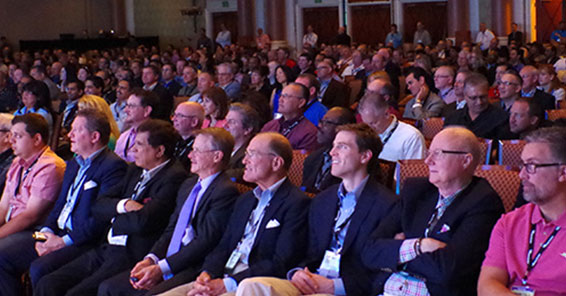

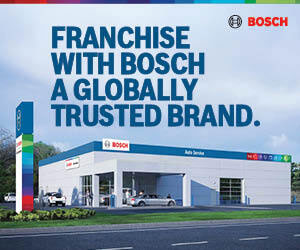

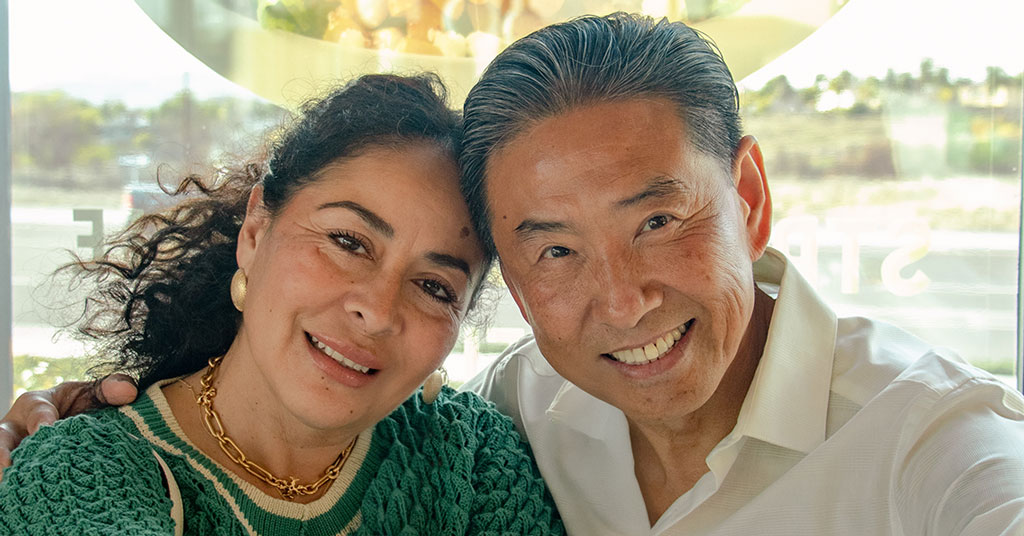
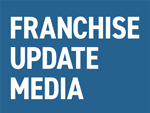
 The franchise opportunities listed above are not related to or endorsed by Franchising.com or Franchise Update Media Group. We are not engaged in, supporting, or endorsing any specific franchise, business opportunity, company or individual. No statement in this site is to be construed as a recommendation. We encourage prospective franchise buyers to perform extensive due diligence when considering a franchise opportunity.
The franchise opportunities listed above are not related to or endorsed by Franchising.com or Franchise Update Media Group. We are not engaged in, supporting, or endorsing any specific franchise, business opportunity, company or individual. No statement in this site is to be construed as a recommendation. We encourage prospective franchise buyers to perform extensive due diligence when considering a franchise opportunity.